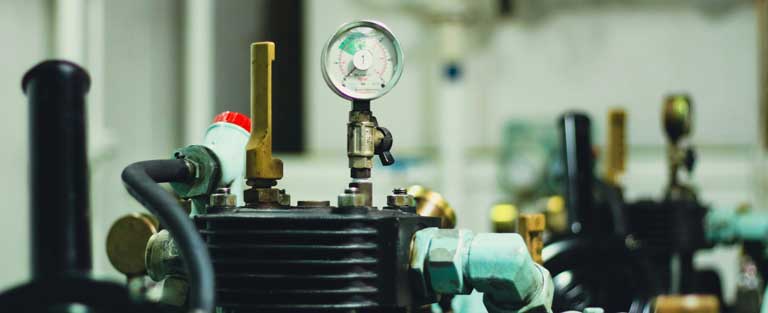A Comprehensive Air Compressor Guide
Air Compressor Guide
Welcome to Pickmore’s “Air Compressor Guide.” Choosing the right air compressor is crucial for maximising efficiency and ensuring you have the power you need for your projects. In this guide, we’ll compare different types of air compressors, offer valuable insights, and provide recommendations to help you make an informed decision.
Types of Air Compressors
Air compressors come in various types, each suited for specific applications. The main types are:
- Reciprocating (Piston) Compressors: These are the most common and are ideal for small to medium-sized operations. They use pistons driven by a crankshaft to deliver air at high pressure.
- Rotary Screw Compressors: Best for continuous use in industrial settings, these compressors use two meshing helical screws to compress air.
- Centrifugal Compressors: Suitable for large-scale industrial applications, these compressors use a rotating impeller to produce high-pressure air.
Considerations for Choosing an Air Compressor
Output (CFM – Cubic Feet per Minute)
The output of an air compressor is measured in cubic feet per minute (CFM). Each air tool requires a specific CFM to operate efficiently. For example, a typical nail gun might require 2-3 CFM, while a sandblaster may need 10-15 CFM. Ensure the compressor you choose meets or exceeds the CFM requirements of your most demanding tool.
Power Source: Electric vs. Petrol
Electric Compressors: These are quieter, more suitable for indoor use, and require a nearby power outlet. They are ideal for small workshops and home use.
Petrol Compressors: These offer greater portability and power, making them suitable for remote locations and heavy-duty industrial use. They are typically louder and require regular maintenance.
Noise Levels
Noise can be a significant factor, especially if you are working in a residential area or an enclosed space. Electric compressors are generally quieter than petrol-driven ones. Always check the decibel rating (dB) of the compressor before purchasing.
Air Receiver Capacity
The air receiver, or tank capacity, affects how long you can run your tools before the compressor needs to refill the tank. Larger tanks (measured in gallons or liters) are beneficial for continuous use, as they reduce the frequency of refills. For example, a 20-gallon tank is suitable for light to moderate use, while a 60-gallon tank is ideal for heavy-duty applications.
Motor Horsepower (HP)
The horsepower of the motor determines the compressor’s ability to generate and maintain pressure. Higher HP models can deliver more power and are suited for demanding tasks. Typical ranges for home use are 1.5 to 5 HP, while industrial models may range from 10 to 100 HP.
Duty Cycle
The duty cycle refers to the amount of time the compressor can run before needing to cool down. A compressor with a 50% duty cycle can run for 5 minutes out of every 10. For industrial applications, look for compressors with a 100% duty cycle for continuous operation.
Portability
Consider whether you need a stationary or portable compressor. Portable compressors are mounted on wheels and can be easily moved around a job site, whereas stationary compressors are larger and more powerful but fixed in place.
Our Recommendations
Air Compressors For Home and DIY Projects
When tackling home improvement tasks, DIY projects or whether you are a hobbyist , having the right air compressor can make a significant difference in efficiency and ease of use. For these applications, a compact and user-friendly compressor is ideal for example DIY Workshop Compressors. Reciprocating (piston) compressors powered by electricity are excellent choices, offering reliable performance with manageable noise levels. With a CFM range of 2-5 and tank capacities between 23-76 litres, these compressors provide sufficient power for typical home tools and tasks, while their 1.5-3 HP motors ensure they can handle a variety of applications without being overly cumbersome.
- Type: Reciprocating (Piston) Compressor
- Power Source: Electric
- CFM: 2-5 CFM
- Tank Capacity: 23-76 litres
- Horsepower: 1.5-3 HP
Air Compressors For Small Workshops and Light Industrial Use
For small workshops and light industrial environments, air compressors need to strike a balance between power and versatility. Reciprocating (piston) compressors are well-suited for these settings, offering a blend of durability and performance. Whether powered by electricity or petrol, these compressors deliver a higher CFM range of 5-10, accommodating a broader range of tools and tasks. With tank capacities of 76-227 litres and horsepower ratings of 3-5 HP, these compressors ensure continuous and efficient operation, making them indispensable for light industrial applications and workshop activities.
- Type: Reciprocating (Piston) Compressor
- Power Source: Electric or Petrol
- CFM: 5-10 CFM
- Tank Capacity: 76-227 litres
- Horsepower: 3-5 HP
Air Compressors For Heavy Industrial Use
In heavy industrial settings, air compressors must deliver high power and reliability to support demanding operations. Rotary screw compressors are the top choice for these applications, providing continuous and efficient air supply. Industrial Petrol Air Compressors and Industrial Electric Air Compressors are particularly advantageous for their portability and high output capabilities. With CFM ratings exceeding 10, tank capacities over 227 litres, and horsepower ratings of 10 and above, these compressors are built to handle intensive tasks and sustain prolonged use, ensuring optimal performance in the most challenging industrial environments.
- Type: Rotary Screw Compressor
- Power Source: Petrol, Diesel or Electric
- CFM: 10+ CFM
- Tank Capacity: 227+ litres
Conclusion
Choosing the right air compressor involves understanding your specific needs and matching them with the appropriate specifications. By considering factors like output, power source, noise level, tank capacity, motor horsepower, duty cycle, and portability, you can select an air compressor that meets your requirements and enhances your productivity.
Explore our range of air compressors at Pickmore to find the perfect match for your needs. Our selection of high-quality compressors ensures you get the reliability and performance necessary for any project, big or small.



